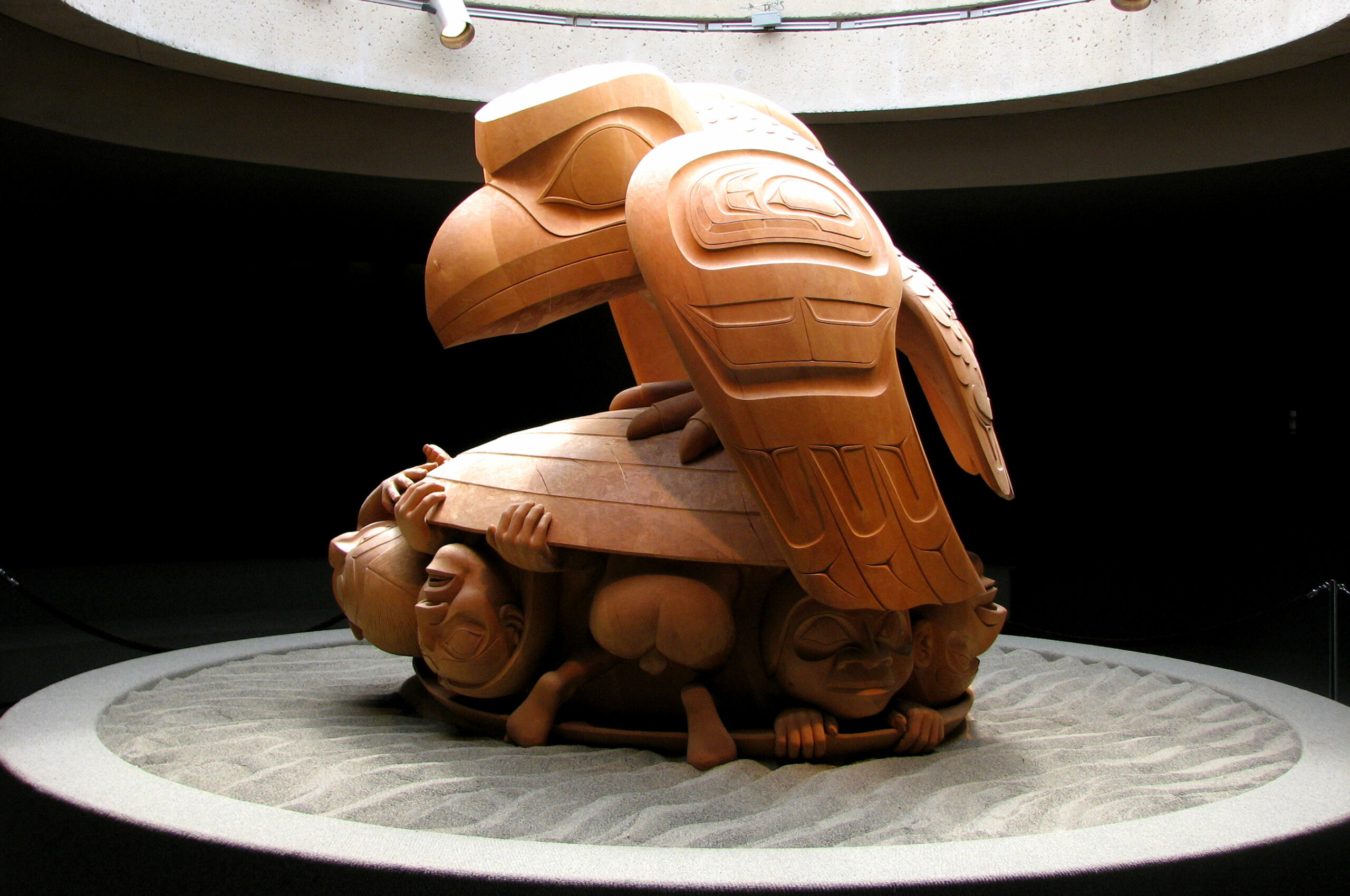Chapter 9: Speaking
Learning Objectives
- Describe the different types of evidence for exploring speech production
- Explore the various stages of speech production and the evidence used for their existence
- Understand the rationale for three prominent speech production models
Living Language

As everyone knows, a long time ago, the world was full of water. As the floods receded, Raven flew over the waters. He saw a gigantic clam shell and feeling bored, flew over and landed on it. He heard strange sounds emerging from the clamshell: “yakity yak-yak”. Having never heard such sounds Raven was curious and knowing that he had to soothe the fears of whatever was inside, he started to sing. After singing in a soothing voice, Raven called out “come out! I am Raven the creator and will not hurt you.” Finally, after more singing, the clamshell opened and out came little beings with two legs, two arms, two hands and no feathers. These being were our ancestors. While they were frightened at first, they spoke to Raven and ate what he brought to feed them. In this way, they became the ancestors of all of us (Kenny, 1994).
This Haida legend is an illustration of the centrality of speech in creating the universe. In every culture we see this repeated from ‘let there be light’ in the bible to ‘let it be and it was so’ (كن فيكون) in the Qur’an. These examples illustrate the centrality of speech to making sense of the universe, indeed creating it from our mind.
In this chapter, we will explore the manner in which we produce speech. We will consider the various stages of speech production and the evidence used to assume their existence. We will organize these stages into a standard model to serve as a basis for our discussion. Then we will explore three prominent speech production models from current psycholinguistic research and see where they agree and disagree in terms of how speech production occurs. The evidence that they use to justify their understanding of speech production will serve as a basis for understanding how researchers employ evidence in modelling psycholinguistic models.
Media Attributions
- Figure 9.1 “Raven and the First Men” by Bill Reid, Museum of Anthropology, UBC, Vancouver, British Columbia, is licensed under a CC BY-SA 3.0 Unported license.

